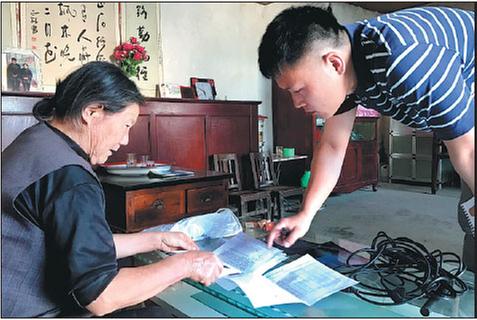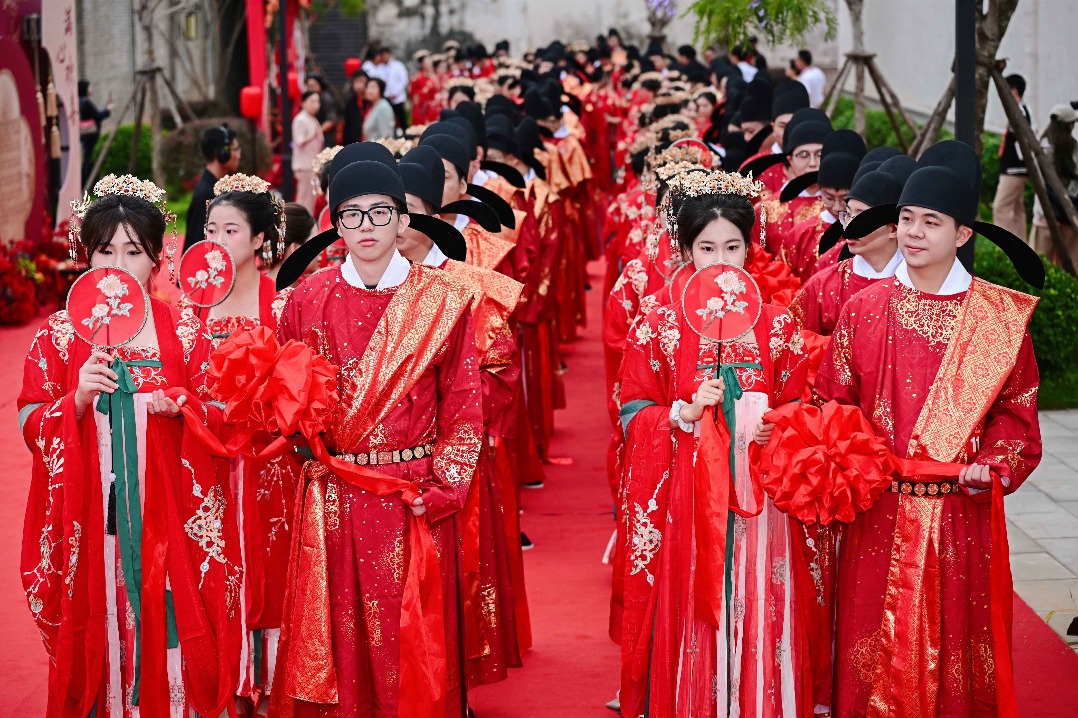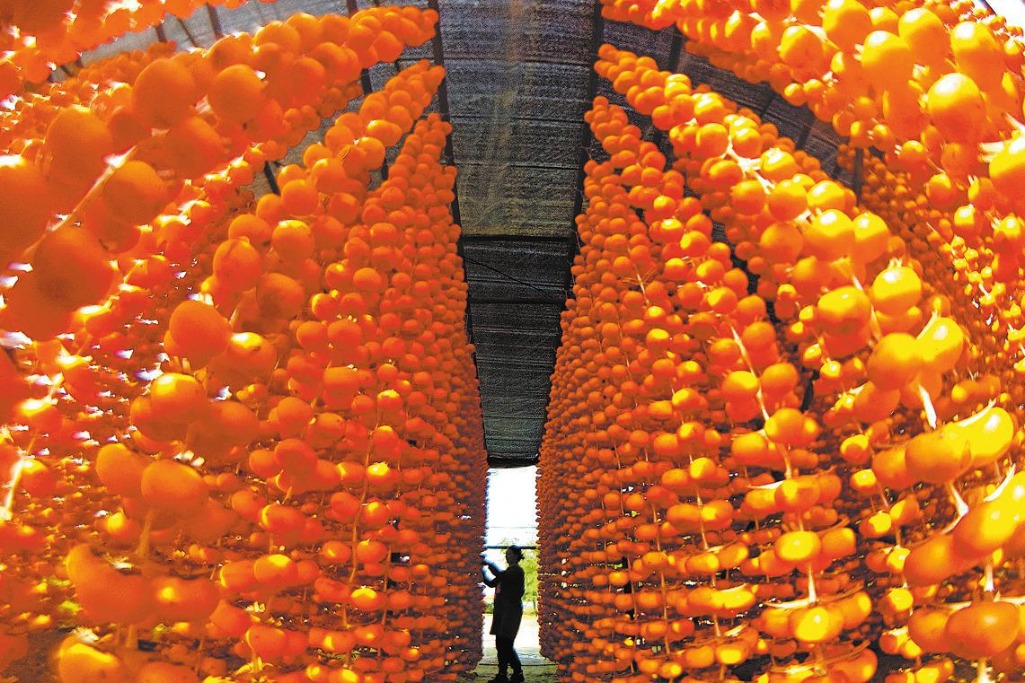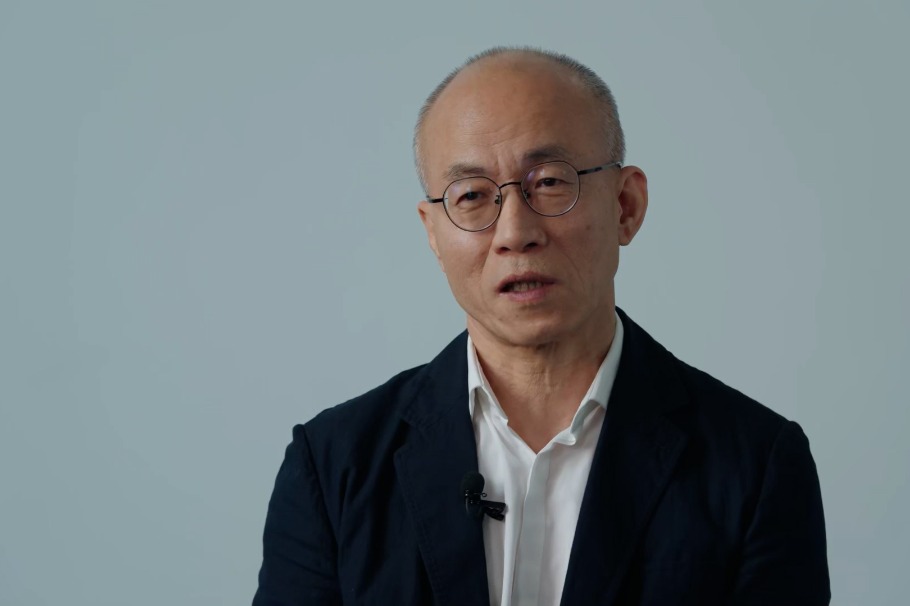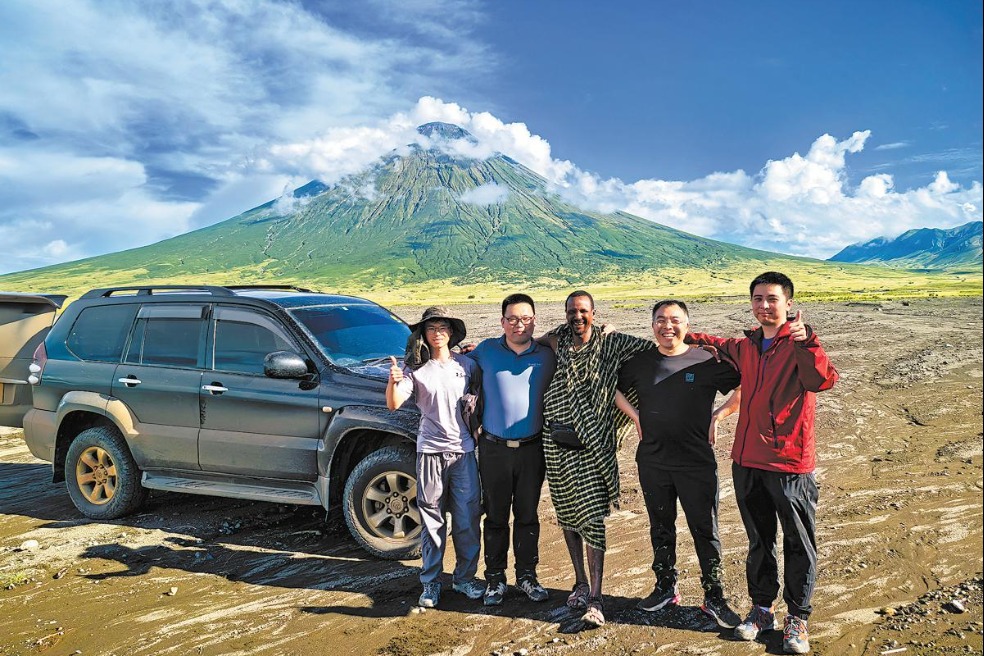Tourism begins to make a mark on the mountain

|
Wang Xiaodong chats with a resident of Huaqiao village, Gansu province.Hu Feng / For China Daily |
Editor's note: In the run-up to the 19th Communist Party of China National Congress, China Daily sent six reporters to live in poor villages for a month to see how China's poverty eradication plan is improving people's lives. Here are one of the first three personal accounts of life in some of the nation's poorest regions. Three more stories will be published on Thursday.
Before I arrived in Kangxian, one of the poorest counties in Northwest China's Gansu province, I thought many of the villages in the mountainous region would be dilapidated, with rows of half-broken houses, bumpy mud roads and livestock roaming everywhere. I abandoned that impression in the first few days after my arrival.
I arrived in Huaqio on May 1, the last day of the three-day May Day holiday, when the village was crowded with tourists. Sitting at the foot of mountains, a new tarmac road connects the village to a highway about 10 kilometers away.
In the village, paved roads are lined with various kinds of trees and flowers, and a suspension bridge and a stone bridge straddle the river. Houses, two or three stories high and with specially designed curved roofs, are dotted behind trees or green meadows.
The place, which looks more like a large garden than a village, was certified as a national 4A tourist site, the second-highest level, by the Gansu provincial tourism authorities at the end of last year.
Local officials told me that Kangxian has been focusing on improving the living environment and developing tourism to help the villagers eradicate poverty. The ease of access meant Huaqiao was one of the first places to be transformed into a "beautiful village".
A lack of suitable farmland and poor transportation links made it difficult for many people in Kangxian to beat poverty. By the end of last year about 15 percent of the county's population still lived below the local per capita poverty line of 3,500 yuan ($515) a year.
A magnitude 8 earthquake that hit neighboring Sichuan province in 2008 dealt a heavy blow to Huaqiao and many other villages nearby, causing many mud houses to collapse, according to residents.
Following the earthquake, the local government provided each household in the villages, including Huaqiao, with a subsidy of 20,000 yuan and a 20,000 yuan interest-free loan to help them rebuild their houses. Most of the villagers took the opportunity to build new bricks-and-mortar houses to replace their mud dwellings.
In recent years, poverty alleviation has been the top task of the county government. Developing public facilities and improving the living environment - including repairing and building new roads, dredging rivers and renovating houses - were the first steps.
The government hopes that beautifying the villages will attract more tourists from nearby cities so the villagers will benefit by developing tourism-related businesses, such as restaurants and providing rooms for visitors.
According to the local government, more than 260 of the county's 350 villages have seen environmental improvements, and a few, such as Huaqiao, have become hot tourist destinations.
In addition to tourism, people in Kangxian have employed a range of methods to eradicate poverty, such as developing local agricultural products like herbs, walnuts and tea. Some villages are even building small entertainment parks in the hope of attracting tourists with children.
Some villages are promoting their traditional cultures, such as the art of storytelling and local musical instruments, by organizing performances in other areas.
Although the development of tourism has benefited many villagers, some are uncertain about the future. Yang Yongqiang, who opened a restaurant in Huaqiao to cater to tourists, said business is good during the holidays and in summer, but there are few visitors in winter, so she may have to grow herbs to supplement her income.
A resident of Guihuazhuang, another village being developed as a tourist site, said he was concerned that the number of visitors will fall as Huaqiao becomes more popular.
Although Kangxian's residents are generally living better lives, some are still struggling. Xu Yinxiang, a 37-year-old resident of Erping village, supports his wife and two children by working seven days a week at a nearby copper mine.
Xu makes about 3,000 yuan a month, but he has almost no savings after paying tuition fees for his children, who attend a primary school in nearby Yangba township. Xu's wife rents a room in the town to care for the children.
Last year, one of his children contracted pneumonia. The hospital treatment cost Xu more than 20,000 yuan, even after he was reimbursed by his health insurer. Now, Xu is considering ways of paying back money he has borrowed.
Zhang Wanxue, a 38-year-old Erping resident who has Parkinson's disease, had hoped to emulate his peers and work in a big city to make money to repay 40,000 yuan he borrowed in 2015 to build a one story, four-room home, but his poor health has prevented him from doing so. Medical expenses are also a big headache for Zhang, so he is reluctant to go to the hospital, and he wishes the reimbursement rate was higher.
Contact the writer at wangxiaodong@chinadaily.com.cn
- China to launch new-generation crewed spaceship in 2026
- China's top political advisory body concludes standing committee session
- China to celebrate the 160th birth anniversary of Sun Yat-sen
- PLA says Philippines' South China Sea 'joint patrol' undermines regional peace, stability
- Experts call China's next five-year plan a critical period for reforms
- Cheng Li-wun assumes leadership of Kuomintang
















